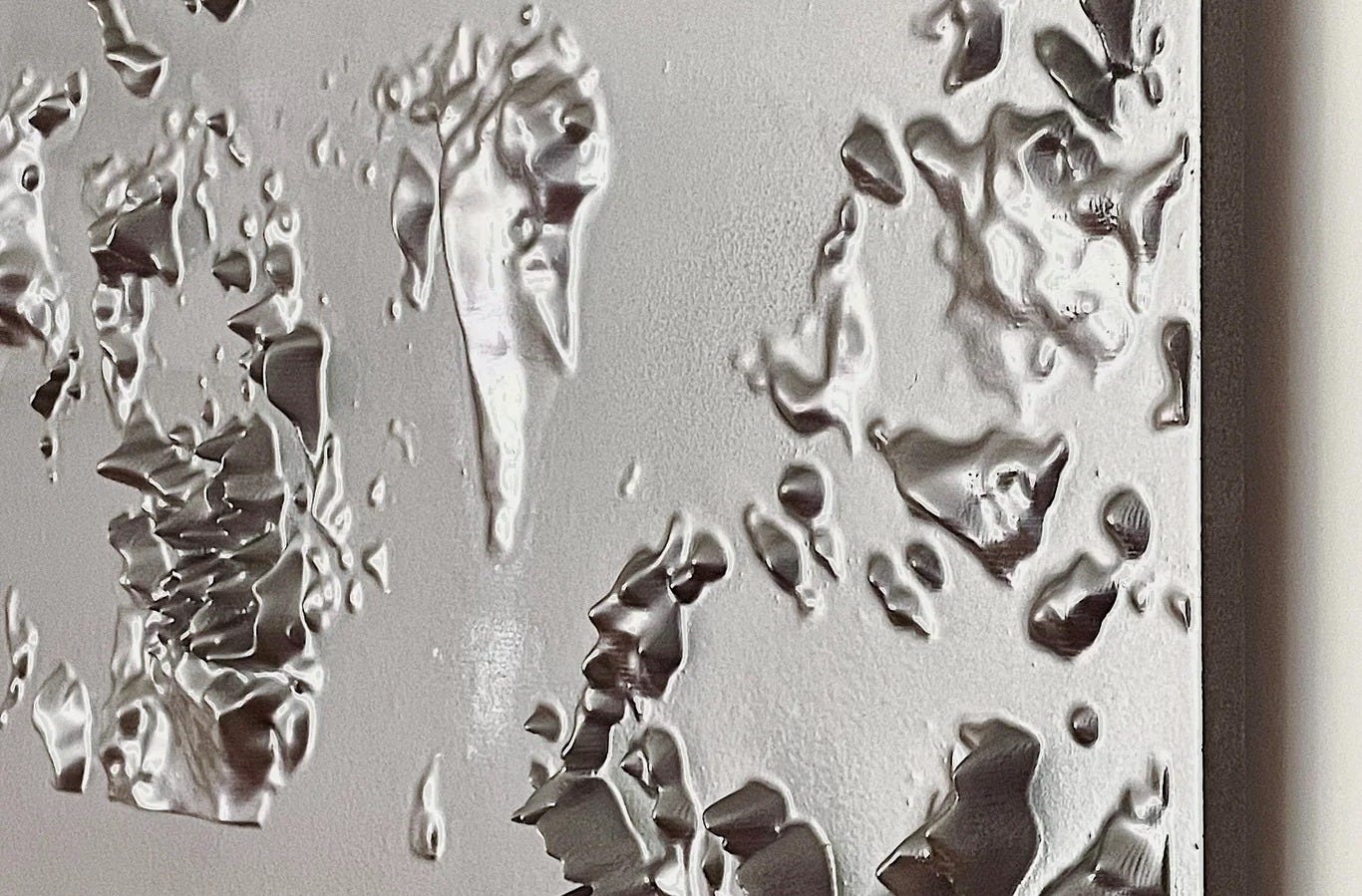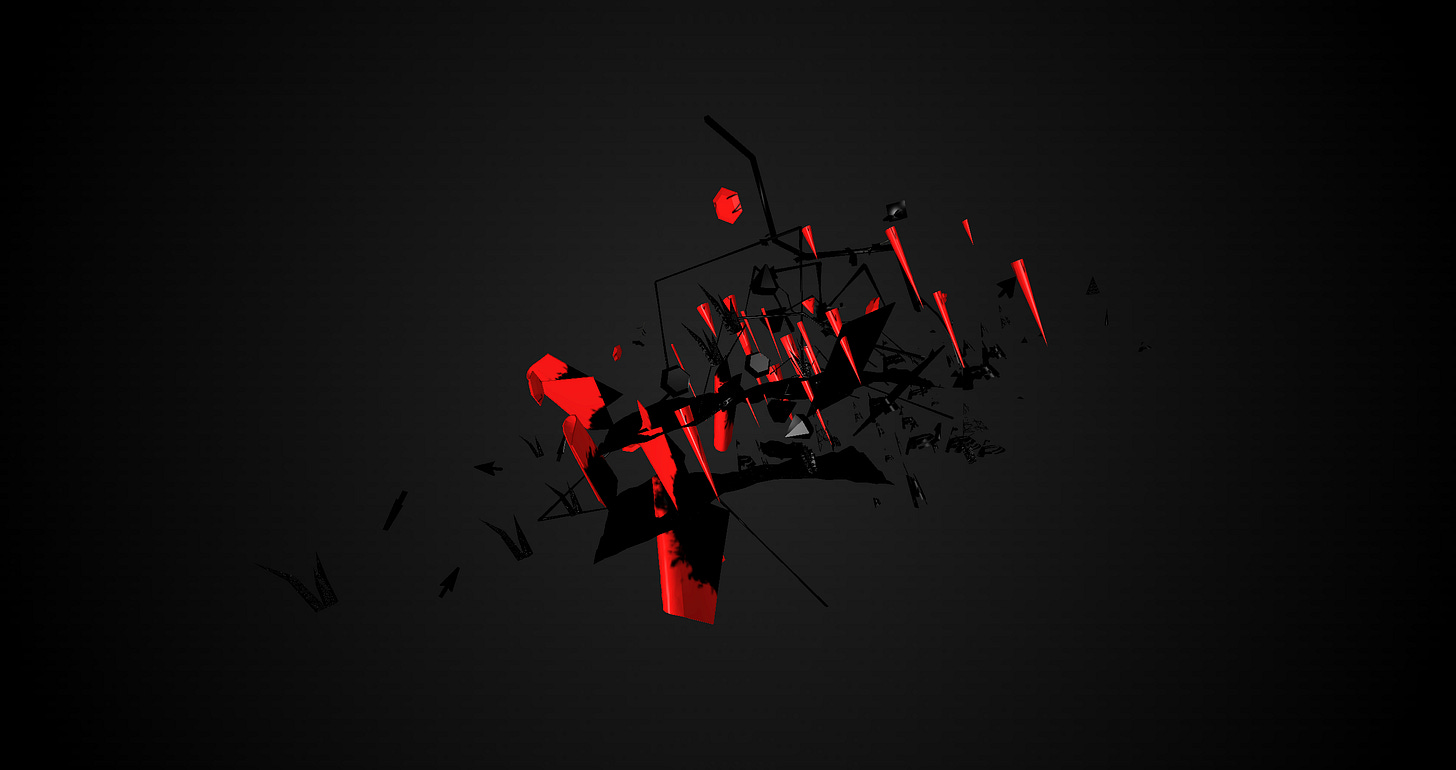Technology isn't interesting
We’re so surrounded by technology that even writing the word technology has become problematic. Pick up a newspaper and you will inevitably read something about AI, social media, the surveillance state or Silicon Valley bros taking over the world. It’s embedded in our lives and there is no escape.
Unless you live remotely and off-grid, look out your window and you’ll see cars and buildings that were designed on computers. Your toothbrush, your kettle and probably even your bookshelf started life on a product designer’s screen and went through various other machine systems before infiltrating your life.
The prevalence of this stuff has obvious psychological effects, which artists aren’t immune to. However many artists are also making their living from responding to the latest developments in robotic or AI innovation as they happen. And technology is almost always used either as a source of inspiration or a target for critical analysis. The result is an endless returning to the same topic.
There are technological artworks that manifest, in modernist fashion, the inner workings of their own generative construction. Others try to tell us something about a possible future. Some try to demonstrate the relationship between natural and mathematical systems. Other artworks reveal biases or agendas hidden in social media or other networks of meaning. Whether used as a focal point for awe or a target to blame, technology is slowly replacing other possible subjects.
When using systems to create an artwork, the steps taken in the process often become visible in the piece. The type of algorithm or the networks used, where the source imagery or objects were taken from and what software was used to manipulate them - all these things manifest themselves. It's become quite a frightening prospect to take account of all these processes and their possible meanings.
Two years ago I made one of my most technically complicated series. There is a large amount of 'functionality' in the artworks, which change dynamically in response to interactions a participant can have with them online. The artist Kevin Abosch found it so complex he jokingly asked me “but what does it do when you die?”.
If you work with technology, most projects will involve learning something new. You need to understand a new software package. Design new code structures. There may be real-time interactions that need to be tested. At some stage you find yourself looking around for previous examples you can refer to, but there aren’t any because no one has done it before.
In the race to do something new you also run into walls. You can find many things that you imagined or wanted are in fact not possible. Compromises need to be made. New possible routes are discovered. But they come with their own complications and more sacrifices are necessary. This type of imagery or that digital object needs to change. And now that has changed, the code has to be tweaked. This process goes on repeatedly for many months, sometimes years.
Producing art in this situation becomes a journey to escape the framework you chose to work with in the first place. To find some neat way out, make a decent exit and put all that anxiety and hysteria from the production back in its box. But it’s not that simple, because those emotions and thoughts are also part of the artwork. The artistic process, which defines the artwork in many ways, doesn’t just involve technology but a person.
I don’t see the point in taking all that time and energy wrestling with these systems to come out at the end with a story to tell about technology. This is an honest response, because by the time I’ve made my way through all of that and got to know the technologies inside-out, ending on a neat exposition about them wouldn’t do the experience justice.
Working in a technological environment means there’s always something new to see. Not only is there always a new technology, but the technology speeds up the production of new categories of objects and experiences. I wonder why, in the face of all this, so much art ends up becoming either a fetish or didactic. Maybe it’s because people are conditioned by the environment they work in.
The process by which these things are made is one part. There’s also the viewer or participant who engages with them. They bring the thoughts and feelings associated with their own interactions in the world. An artwork is completed by the viewer, but the viewer is also tired of thinking about technology.
I produce the most technically innovative and complex work I can, including many misuses of new technology. Then I write a detailed functional description, including all the laborious steps. As a result of this developing practice, the descriptions have become so long now they're kind of ridiculous. Nobody is being forced to read them. But this whole process, with the confusion, frustration and anxiety that occurs naturally for everyone involved, is actually what makes it interesting for me.
Technology itself really isn't that interesting. There are plenty of other things that are. Technology just happens to be mixed up with them.



